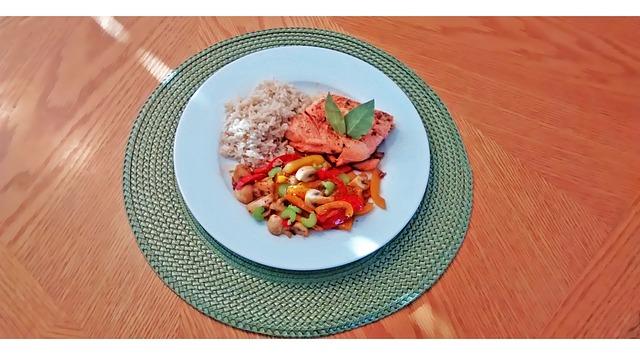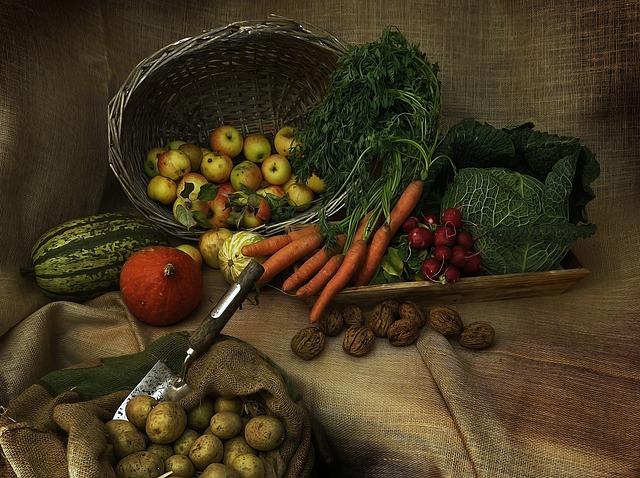Raising healthy, thriving children is a priority for every parent, and nutrition plays a pivotal role in this journey. As kids grow, their bodies and minds require a balanced intake of nutrients to support their development and overall well-being. However, with the abundance of information available, navigating the world of children’s nutrition can often feel overwhelming. This article aims to provide you with practical, evidence-based nutrition tips tailored for growing kids. We understand the challenges you face and are here to guide you with empathy and clarity, ensuring your child receives the nourishment they need to flourish. Whether you’re dealing with picky eaters or simply seeking ways to enhance your family’s dietary habits, these insights will empower you to make informed decisions that promote a healthy, happy lifestyle for your little ones.
Understanding the Nutritional Needs of Young Minds
To foster a thriving environment for your child’s cognitive and physical development, it’s crucial to provide them with a balanced diet rich in essential nutrients. Young minds require a diverse range of vitamins and minerals to support their growth and brain function. Here are some key nutritional components to consider:
- Protein: Essential for muscle growth and repair. Include lean meats, beans, and dairy products.
- Calcium: Vital for strong bones and teeth. Offer milk, yogurt, and leafy greens.
- Iron: Supports energy levels and cognitive development. Incorporate lean red meats, lentils, and fortified cereals.
- Omega-3 Fatty Acids: Important for brain health. Provide fatty fish like salmon, walnuts, and flaxseeds.
- Fiber: Aids in digestion and keeps kids full longer. Choose whole grains, fruits, and vegetables.
To help you better understand the daily nutritional needs, here’s a simple guide:
| Nutrient | Recommended Daily Intake |
|---|---|
| Protein | 19-34 grams |
| Calcium | 700-1300 mg |
| Iron | 7-10 mg |
| Omega-3 | 1-2 grams |
| Fiber | 15-25 grams |
Remember, every child is unique, and their nutritional needs can vary. It’s always a good idea to consult with a pediatrician or a nutritionist to tailor a diet plan that best supports your child’s individual growth and well-being.

Incorporating Essential Vitamins and Minerals for Optimal Growth
Ensuring that children receive a balanced intake of essential vitamins and minerals is crucial for their growth and development. Vitamins A, C, and D, along with minerals like calcium, iron, and zinc, play significant roles in supporting everything from bone health to immune function. Incorporating these nutrients can be achieved through a variety of delicious and kid-friendly foods.
- Vitamin A: Promotes good vision and immune health. Find it in carrots, sweet potatoes, and spinach.
- Vitamin C: Essential for skin health and iron absorption. Include citrus fruits, strawberries, and bell peppers in their diet.
- Vitamin D: Crucial for bone growth. Offer fortified milk, eggs, and spend time outdoors for natural sunlight exposure.
- Calcium: Supports strong bones and teeth. Dairy products, tofu, and leafy greens are excellent sources.
- Iron: Important for oxygen transport in the blood. Include lean meats, beans, and fortified cereals.
- Zinc: Aids in growth and immune function. Serve meats, shellfish, and whole grains.
| Vitamin/Mineral | Food Source | Benefits |
|---|---|---|
| Vitamin A | Carrots, Spinach | Vision, Immunity |
| Vitamin C | Oranges, Bell Peppers | Skin, Iron Absorption |
| Calcium | Milk, Tofu | Bone Health |
Integrating these nutrient-rich foods into meals doesn’t have to be a battle. Get creative with smoothies, colorful salads, and fun-shaped veggie servings to make healthy eating an enjoyable experience for your kids. Remember, a varied diet not only meets their nutritional needs but also fosters a lifelong appreciation for wholesome foods.

Creating Balanced Meals That Kids Will Love
When it comes to preparing meals for children, the secret lies in striking the perfect balance between nutrition and taste. Kids are more likely to enjoy meals that are visually appealing and delicious. Here are some creative tips to ensure your little ones are excited about their plates:
- Colorful Vegetables: Use a variety of colorful vegetables to make the plate vibrant. Think of red bell peppers, orange carrots, and green broccoli. Not only do they provide essential nutrients, but they also make meals more appealing.
- Fun Shapes: Use cookie cutters to shape sandwiches, fruits, or cheese. This small effort can make a huge difference in a child’s interest in their meal.
- Interactive Meals: Consider meals that kids can assemble themselves, like tacos or mini pizzas. This gives them a sense of control and fun over their meal.
For a practical guide, consider the following balanced meal plan. This table provides a snapshot of a nutritious yet kid-friendly meal:
| Meal Component | Example |
|---|---|
| Protein | Grilled Chicken Strips |
| Vegetable | Steamed Broccoli with Cheese |
| Carbohydrate | Sweet Potato Wedges |
| Fruit | Sliced Strawberries |
| Dairy | Low-fat Yogurt |
By incorporating these elements, you’re not only meeting the nutritional needs of your children but also nurturing a positive attitude towards healthy eating. Remember, the goal is to make every meal a delightful experience!

Fostering Healthy Eating Habits in a Fun and Engaging Way
Creating an environment where healthy eating is a fun adventure can be incredibly rewarding. Here are some creative strategies to inspire kids to embrace nutritious foods:
- Colorful Plates: Incorporate a rainbow of fruits and vegetables into their meals. This not only makes the plate visually appealing but also ensures a variety of nutrients.
- Interactive Cooking: Invite kids into the kitchen to help prepare meals. Simple tasks like washing veggies or stirring can make them more interested in what they’re eating.
- Storytime Meals: Turn mealtime into a storytelling session. Talk about how superheroes eat their greens to stay strong or how astronauts need protein to explore space.
To make this journey even more engaging, consider setting up a simple reward system. Use a sticker chart to track new foods they try or meals they help prepare. Each new experience earns them a fun sticker, leading to a small reward, such as a family movie night or an extra playtime session. This approach turns healthy eating into a game, encouraging them to try new things and develop a positive relationship with food.
| Food Group | Fun Food Example | Health Benefit |
|---|---|---|
| Fruits | Banana Dolphins | Rich in Potassium |
| Vegetables | Carrot Swords | High in Vitamin A |
| Proteins | Chicken Skewers | Essential for Growth |








































